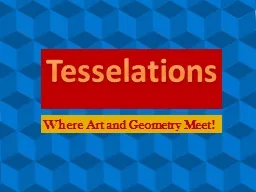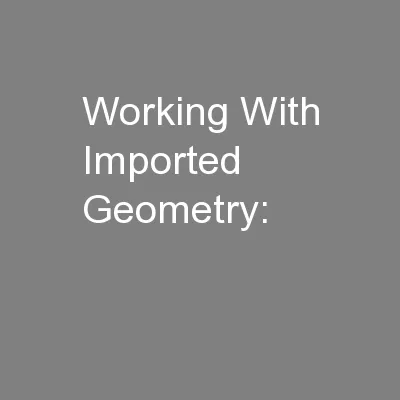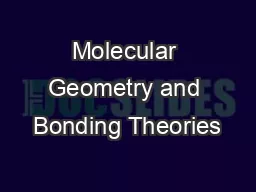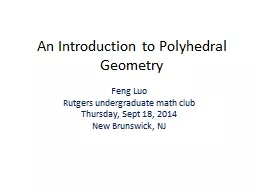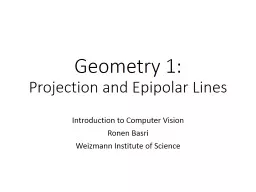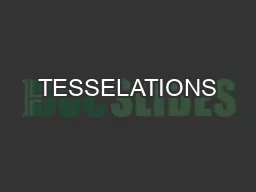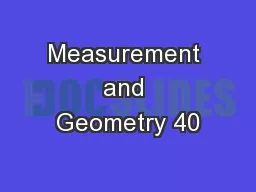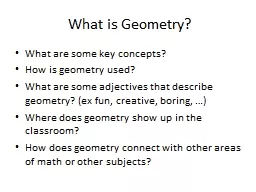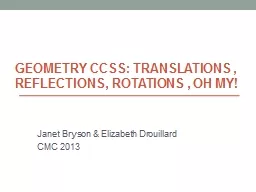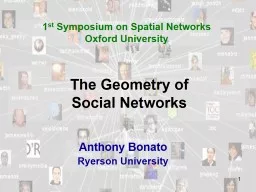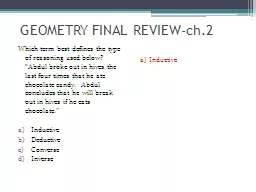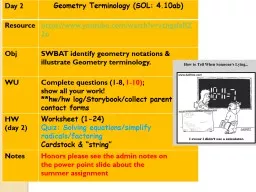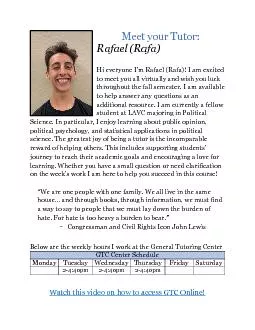PPT-Tesselations Where Art and Geometry Meet!
Author : faustina-dinatale | Published Date : 2018-03-15
What shapes can tile the plane In other words shape can you put next to itself and NOT have any gaps Circles Octagons Hexagons Triangles Regular Tessellations When
Presentation Embed Code
Download Presentation
Download Presentation The PPT/PDF document "Tesselations Where Art and Geometry Meet..." is the property of its rightful owner. Permission is granted to download and print the materials on this website for personal, non-commercial use only, and to display it on your personal computer provided you do not modify the materials and that you retain all copyright notices contained in the materials. By downloading content from our website, you accept the terms of this agreement.
Tesselations Where Art and Geometry Meet!: Transcript
Download Rules Of Document
"Tesselations Where Art and Geometry Meet!"The content belongs to its owner. You may download and print it for personal use, without modification, and keep all copyright notices. By downloading, you agree to these terms.
Related Documents

